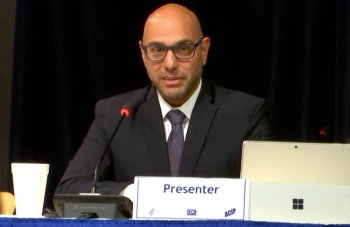
Health care spending to top $7 trillion by 2031, CMS says
Medicare, hospital spending will be biggest drivers of growth
By 2031
The Centers for Medicare & Medicaid Services (CMS), in its annual
Among health care sectors, hospital spending is expected to grow the fastest at 5.8% per year on average. That will be followed by physician and clinical sectors at 5.3%, and prescription drugs at 4.6%.
Spending on health care services within the major sectors is expected to outstrip price increases. While hospital spending is predicted to grow at a 5.8% annual rate, average price increases for hospitals will be 3.2%. Similarly, spending on physician and clinical services is expected to grow at a 5.3% annual rate, but prices will increase 2%. For prescription drugs the predicted increases are 4.6% and 2.2%, respectively.
Spending for physician and clinical services is projected to have grown by 2.4% in 2022, significantly slower than the 5.6% increase in 2021. CMS attributes the slowdown to people forgoing physician appointments due to the high rate of inflation throughout the economy, along with limited appointment availability and resulting long wait times.
The relatively modest increases forecast for prescription drug spending is due to provisions in the Inflation Reduction Act that, “fundamentally altered the Part D [prescription drug] benefit by reducing…the program’s cost-sharing arrangements,” CMS says. Those changes include the first-ever requirement that the U.S. Department of Health and Human Services negotiate prices for some high-cost drugs and linking price increases for certain drugs to increases in the Consumer Price Index The effect will be to reduce cost sharing for Medicare beneficiaries.
CMS forecasts that the percentage of Americans with insurance coverage will peak this year at 92.3% then decrease to 90.5% by 2031. Much of that drop will be due to a decline in Medicaid enrollment from 90.4 million to 81.1 million resulting from states’ tightening eligibility requirements following the expiration of the COVID-19 public health emergency.
Newsletter
Stay informed and empowered with Medical Economics enewsletter, delivering expert insights, financial strategies, practice management tips and technology trends — tailored for today’s physicians.















